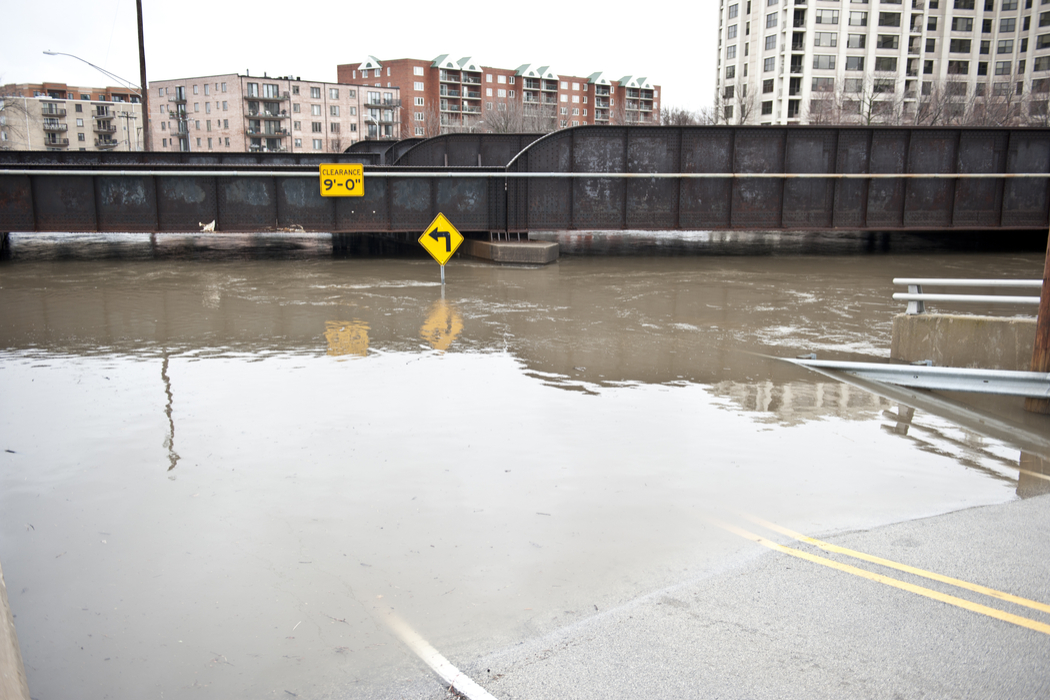
Inclement weather can put a damper on anyone’s commute. Unfortunately, bad driving conditions can sneak up seemingly out of nowhere and increase your chances of a car accident. As summertime approaches and temperatures begin to rise, rain showers tend to be more prevalent and heavy rains can lead to a Chicago flash flood, which is one of the most dangerous driving conditions. To help you and your family stay safe during a flash flood, the personal injury lawyers at Lerner and Rowe have some tips on how to navigate flooded roadways.
Think Safety First During a Chicago Flash Flood
According to FEMA, most flood fatalities happen because people try to drive through deadly waters rather than avoid them. With that in mind, the only way to remain 100% safe while there is flooding is to not drive. If travel can be averted then do not operate a vehicle until the danger has passed.
Consult the local forecast or the National Weather Service to try to stay ahead of the danger. If heavy rains are predicted, safety experts suggest moving your vehicle(s) to higher ground if time allows.
However, weather can be unpredictable and flash floods can develop without warning, so it may not always be possible to stay inside or avoid flooded roadways. If you must drive during a flash flood, turn around and find alternate routes that have been less affected by the rainfall. Driving on roads with standing, moving, or swirling water increases the risk of a catastrophic injury.
Driving Through Flooded Streets
Lerner and Rowe’s Chicago car accident lawyers strongly suggest avoiding flooded streets when possible. However, if there is no way to avoid driving on a flooded street, there are steps you can take to navigate the hazard as safely as possible.
First, you should scan the surrounding area for downed light poles or power lines. The electric current travels through water and can lead to an electrocution injury.
Next, you should try to identify the depth of the water ahead and whether it is standing or moving. It only takes 6 inches of standing water to stall a car’s engine, while 12 inches of water can be enough to stop contact of the tires with the road completely. Knowing how deep the water is could be the difference between life and wrongful death. Use the surrounding area and objects to try to gauge the water level. Curbs, street signs, and fire extinguishers can serve as points of reference to judge the height of the water.
Pay attention to the other cars on the road, as well. If vehicles of similar size to yours seem to be making it through with little difficulty, it is a good indication that it may be alright to attempt to navigate the road. Once you determine the surrounding area’s safety, proceed slowly forward at a steady pace. Driving too fast or braking too quickly can lead to water getting under the vehicle.
Hydroplaning Can Be Deadly
Hydroplaning takes place when a vehicle’s tires lose contact with the road due to a layer of water between the two. Vehicles lose the ability to steer or brake during hydroplaning and skidding can occur if the car is moving at excessive speeds when hydroplaning occurs. It doesn’t take a lot of water for a vehicle to start to hydroplane; just an inch or two of water is enough to separate tires from the road.
If your vehicle starts to hydroplane, don’t panic or slam on the brakes; sudden braking will cause the vehicle to lose control and spin out more quickly. Instead, remain calm then ease off the pedal and try to direct the car away from intersections and other hazards. Aim for an open area with as few objects as possible.
If you begin to skid, remain calm and gently counter-steer the vehicle until you regain control. Be sure not to jerk the wheel or over-correct too suddenly as this can throw you further into the spin. Maintain the integrity of the vehicle’s tires by keeping them properly inflated and monitoring the tires’ treads for signs of wear and tear.
Get Hurt in a Chicago Flash Flood Accident?
Unfortunately, reckless drivers and Chicago flash floods can result in an accident no matter how safe you’re being. Please know that the Chicago car accident lawyers at Lerner and Rowe are here to help you when the unexpected happens. Our team is available 24 hours a day, 7 days a week to assist you in the event of a Chicago flash flood accident. Don’t hesitate to give a call!
In a wreck? Need a check?™ Lerner and Rowe Injury Attorneys brings experience, skill, and passion to your case. We also provide free consultations and do not charge any fees unless your case is won! Give us a call at 708-222-2222 or reach out to us online through LiveChat today.



